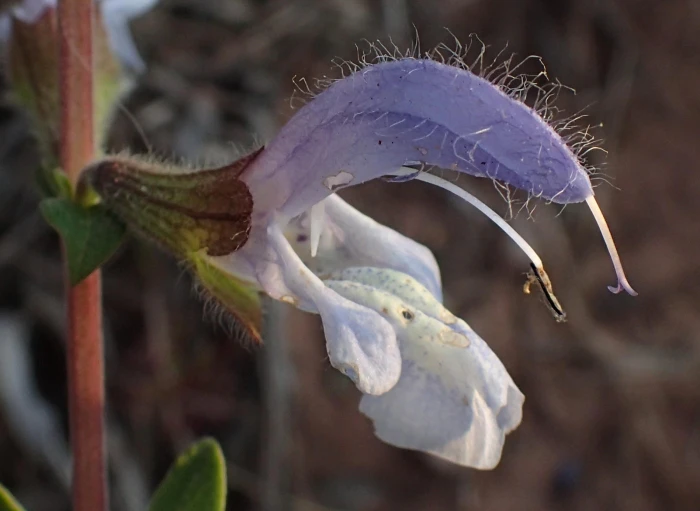African Sage
(Salvia africana)
African Sage (Salvia africana)
/
/

Nicola van Berkel
CC BY-SA 4.0
Image By:
Nicola van Berkel
Recorded By:
Copyright:
CC BY-SA 4.0
Copyright Notice:
Photo by: Nicola van Berkel | License Type: CC BY-SA 4.0 | License URL: http://creativecommons.org/licenses/by-sa/4.0/ | Rights Holder: Nicola van Berkel | Publisher: iNaturalist | Date Created: 42609 |


















































Estimated Native Range
Climate Requirements for Findlay, Ohio
| This Plant | Your Site | Plant Suitability for Your Location | ||
|---|---|---|---|---|
| • Precipitation | 7" - 60" | 36" | Aquatic | Aquatic |
| • High Temp. | 73°F - 101°F | 85°F | Your summer temperatures are normal for this plant. | Excellent |
| • Low Temp. | 26°F - 65°F | 17°F | Your winter temperatures may be too cold for this plant | Too cold |
This plant may not grow well at your location - your precipitation is too high.
Summary
Salvia africana, commonly known as African Sage, is an evergreen perennial shrub native to the coastal fynbos and sandy scrublands of the Western and Eastern Cape Provinces of South Africa. It typically grows to a height and width of 60–90 cm, featuring heavily branched, round grayish stems covered with fine hairs. When these hairs are brushed, they release a strong, aromatic scent. The leaves of African Sage are soft grey-green, lighter on the underside, and elliptically shaped, adding to the plant’s textured appearance. Its inflorescences can reach up to 30 cm long, with each whorl containing 2-6 flowers that display a color range from pale blue to pale violet or pink, blooming from late winter to summer and attracting pollinators such as bees and butterflies.
African Sage is valued for its drought tolerance, aromatic foliage, and attractive flowers, making it a suitable choice for water-wise gardens, coastal landscapes, and as a fragrant addition to herb gardens. It is also used in traditional medicine. In cultivation, it thrives in full sun and requires low amounts of water, preferring well-drained soils. While it is generally easy to maintain, it can be susceptible to root rot if overwatered. African Sage can be propagated from cuttings or seeds, and regular pruning helps maintain its shape and encourages denser growth.CC BY-SA 4.0
African Sage is valued for its drought tolerance, aromatic foliage, and attractive flowers, making it a suitable choice for water-wise gardens, coastal landscapes, and as a fragrant addition to herb gardens. It is also used in traditional medicine. In cultivation, it thrives in full sun and requires low amounts of water, preferring well-drained soils. While it is generally easy to maintain, it can be susceptible to root rot if overwatered. African Sage can be propagated from cuttings or seeds, and regular pruning helps maintain its shape and encourages denser growth.CC BY-SA 4.0
Plant Description
- Plant Type: Shrub
- Height: 2-3 feet
- Width: 1-2 feet
- Growth Rate: Moderate
- Flower Color: Purple, White
- Flowering Season: Winter, Spring, Summer
- Leaf Retention: Evergreen
Growth Requirements
- Sun: Full Sun
- Water: Low
- Drainage: Medium, Fast
Common Uses
Bee Garden, Bird Garden, Butterfly Garden, Deer Resistant, Drought Tolerant, Fragrant, Hummingbird Garden, Low Maintenance, Rabbit Resistant, Showy Flowers
Natural Habitat
Coastal fynbos and sandy scrublands of the Western and Eastern Cape Provinces of South Africa
Other Names
Common Names: Blue Sage, Wild Sage, Purple Sage, African Blue Sage
Scientific Names: Salvia africana, Salvia acetabulosa, Salvia tauricola, Salvia barbata, Salvia molucellae, Salvia undulata, Arischrada molucellae, Crolocos colorata, Megyathus acetabulosum
GBIF Accepted Name: Salvia africana L.